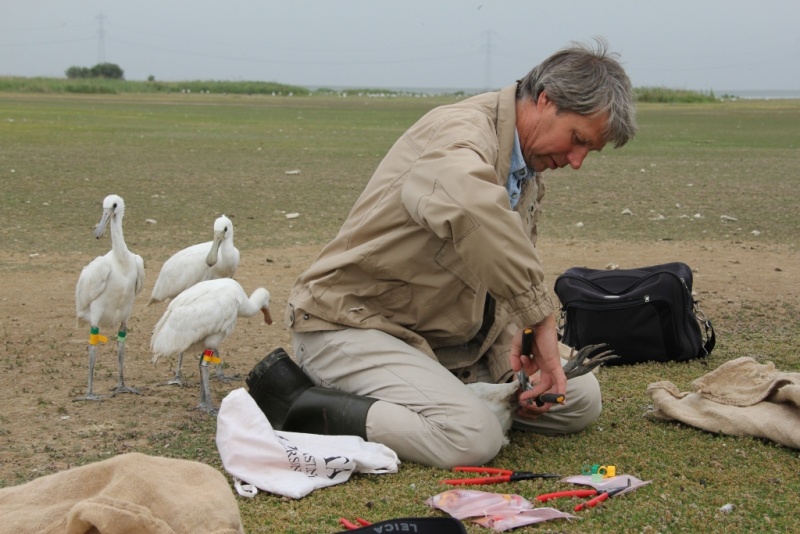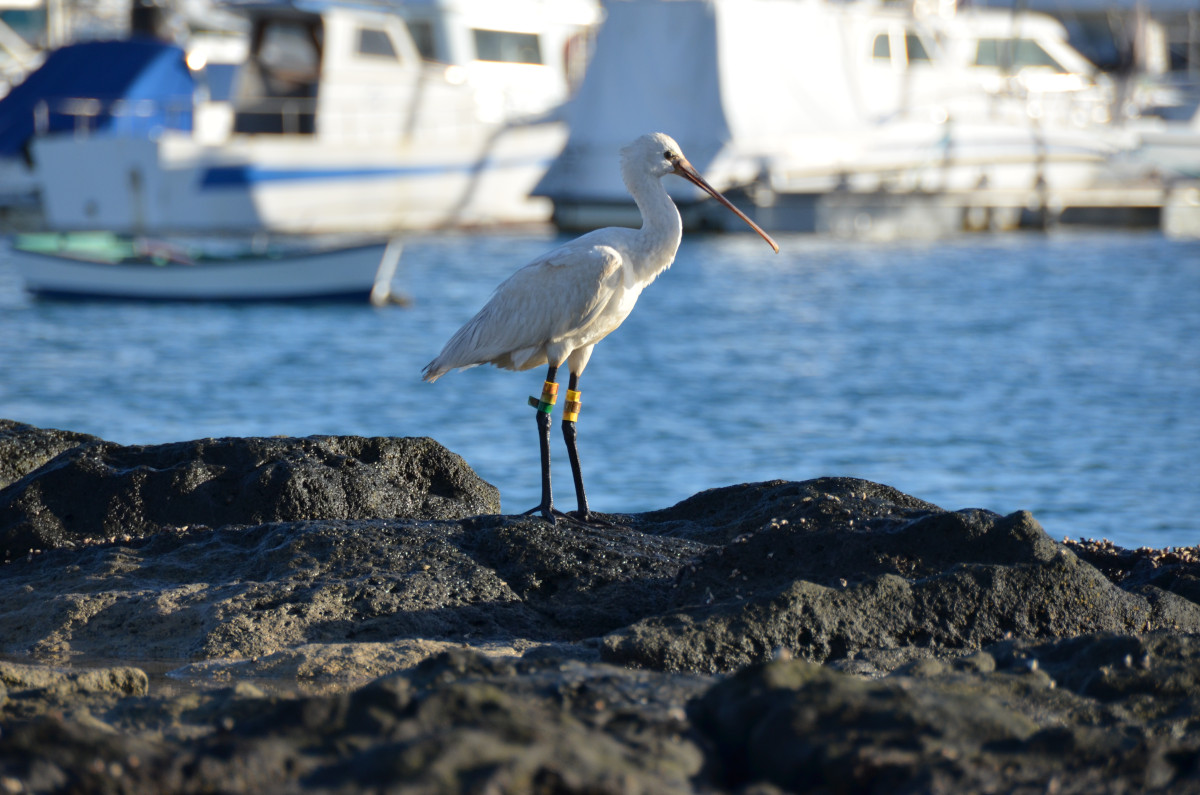Why color rings?
Spoonbills in particular have been color-ringed in the Dutch breeding colonies for over 40 years. The reading of the color rings is done by more than a thousand dedicated volunteers. Data on these color-ringed spoonbills are stored in a database, in which data is managed by the working group since 1972. The Dutch Spoonbill Working Group also manages data on spoonbills ringed in Belgium and Germany and collaborates with other ringing groups within Europe and out there. In addition, part of the spoonbill young of the subspecies balsaci in Mauritania is color-ringed.
After a number of years, we were able to start calculating with this data. For example, it appears that survival depends on the density in which the spoonbills occur. The reason for this is probably competition for food. Survival clearly decreases as spoonbill numbers increase. There is a difference in survival between adults and juveniles. The highest juvenile mortality occurs after the breeding season, on their first southward journey. Adults have the highest mortality on the way back from West Africa to the Netherlands. It has now been shown that there is a shift from wintering in West Africa to Portugal and Spain.
Sometimes people wonder whether further research is still necessary, for example with the argument “we already know everything”. First of all, we still don’t know a lot, but things that are already known can also change; such as the shift of the wintering area from Africa to Europe, coupled with a difference in survival rates. Long-term color ring research in particular provides invaluable data on, among other things, (changes in) survival, age structure, migration strategy and habitat choice.
How we ring the spoonbills
Studio Brandaris made two videos in which it’s explained how we ring spoonbills.
Ringing spoonbills, Griend 2016 - Studio Brandaris
Ringing spoonbills, de Boschplaat, Terschelling - Studio Brandaris



